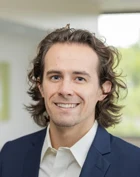INSIGHTS

Ryan Hale
Founder + Vice President - LaneshiftWhile it is no secret that walkable and bikeable communities enjoy a higher quality of life and stronger economic development opportunities, many city leaders struggle with knowing where to begin. Active transportation networks can seem like an amenity that is nice to have but ultimately feel unrealistic for some communities. City leaders often ask me, “Is this even possible in our town?” The short answer is yes.
I learned the power of practice early in my football career at the University of Arkansas. Like any team, we would watch film and review game plans in a classroom setting. It was an essential part of our success. However, it was no substitute for getting on the field and practicing together. The most impactful learning happened after we put on a helmet and pads and practiced at full speed. The importance of hands-on learning has stuck with me throughout my life and is especially relevant in my role leading Laneshift as an educator and facilitator.
At Laneshift, we host active transportation educational workshops built on the idea that the best way to learn is by doing. Our flagship program is called the Active Transportation Academy. It is a four-day professional development course that puts mayors, city engineers, city planners and other industry professionals on e-bikes so they can experience firsthand what it feels like to move around a city on a bicycle. We evaluate safety, comfort and motorist behavior in real time on two wheels. Through our work, one of the most powerful lessons we have learned is that if you can change the way people think, you can change the way people make decisions.
We have seen various city leaders experience an “aha” moment while participating in our educational programs. Through hands-on learning, they start to understand how harnessing a community’s culture — its behaviors and values — is both a powerful and necessary force for change.
“The academy completely transformed my perception of active transportation and how I interact with not only the physical spaces themselves but the people who are in positions to make positive impacts,” said Jennifer Grisson, former director of Fort Worth Bike Sharing.

No matter a city’s size, current budget limitations or political environment, there are steps any community can take to make active transportation more viable. The very first step to creating a connected community is learning and understanding the necessary ingredients. At Laneshift, we believe the ingredients of connected communities fall under two categories: infrastructure and culture.
We created the Connected Community Model to spell out these two components. Infrastructure is our built environment: We need our active transportation infrastructure to be safe, comfortable and connected. Culture is our behavior and values: We need our culture surrounding active transportation to be welcoming, accessible and encouraging. The marriage of infrastructure and culture is our recipe for creating a connected community.
For a city looking to embrace active transportation, creating a citywide bicycle and pedestrian master plan, researching available grants or even improving a crosswalk are all worthwhile endeavors. While these projects focus primarily on infrastructure and how to build it, there are equally important culture-building initiatives a city should also consider.
The city of Benton started a Ride with the Mayor event in which the public is encouraged to go on a leisurely ride through the city with Mayor Tom Farmer. The Square 2 Square bike ride from Bentonville to Fayetteville saw nearly 2,000 riders this spring and is open to users of all ages and abilities. Frequent pit stop locations along the route are filled with families and encourage riders to take it easy and enjoy the ride. Some school districts embrace Bike to School Week and provide adult-supervised group rides called Bike Trains to encourage independence and confidence among student riders.
At Laneshift, we are fortunate to host community leaders from across the country in our educational programs. Our participants often come away from our sessions with new determination and a new mindset on how they can apply what they learned in their own community. We often witness the very beginnings of a cultural shift happening at the personal level.
“The academy was an experience I could never compare to any other learning experience I have ever had,” said Gentry Mayor Kevin Johnston. “From the Laneshift team and their industry partners to the on-the-ground, see-it-for-yourself exposures, I returned to my community with a better understanding of how to see active transportation from many different angles.”
Walkable Downtowns Drive Economic Development

Dave Roberts, PLA, ASLA
Senior Vice President - Planning & Business DevelopmentMany cities prioritize improving walkability in downtowns and commercial areas, not just to enhance safety or to develop community character, but because there is real potential for financial return on investment. Investments in walkability, which measures an area’s ease of connectivity via non-vehicular transportation, can include sidewalks, multi-use paths, streetscape enhancements, and traffic-calming measures. While these projects might be more often categorized as infrastructure, they do much more than provide a mode of transportation. They have the power to transform local economies.
Places where people feel safe and comfortable walking are places where businesses can thrive. Bustling downtown districts offer a variety of things to do - restaurants, coffee shops, art galleries, and breweries - all within walking distance of one another. Increased foot traffic creates higher property values in these areas and the surrounding neighborhoods as well. Over time, the tax value per acre in these dense, walkable areas will outpace areas that are more dependent on vehicular traffic. This has been confirmed in multiple studies by Urban3, a company specializing in revenue modeling and cost of service analysis for cities.
Not only do these compact, walkable places generate more tax revenue per acre, they require less extensive infrastructure networks compared to sprawling, car-dependent developments. For cities, this results in lower costs for road maintenance, utilities, and public services. It’s a win-win.
Pathways to Progress: How RAISE Grants Can Strengthen Arkansas

Isaac Sims, AICP, PCED
Planner III - PlanningSigned into law in 2021, the Bipartisan Infrastructure Law (BIL) allocated $550 million for transportation, resilience and broadband infrastructure, the largest such investment in the history of the United States. Similar infrastructure programs have provided funds in the past to states, counties, metropolitan planning organizations and municipalities to build and repair new roads, bridges and trail systems.
The priority for clean and equitable transportation modes, such as bicycling and walking, can be found in the title of this new grant program: Rebuilding American Infrastructure with Sustainability and Equity, or RAISE. In Arkansas, adding more trails makes sense when considering solutions to local transportation issues, primarily due to the reality that most cities are too small to support public transit (beyond on-demand systems). Only the largest metropolitan regions in the state, Central Arkansas and Northwest Arkansas, have the population threshold necessary to support public transit. When integrated into a regional transportation framework, trails become not only recreation options, but practical transportation modes, turning a car trip of less than a mile into a 5-minute bike ride or a 20-minute walk.
The U.S. DOT has awarded two Arkansas communities with RAISE grants for comprehensive trail networks (with two additional trail projects awarded to ArDOT and ADPHT). In 2022, Conway was awarded a $24.6 million RAISE grant to construct 15 miles of separated multi-use trails. Just one year later, Russellville won $23.4 million to construct a similar 13-mile network. Most recently, Searcy was awarded $4.2 million, the largest grant award in the City’s history, for the planning portion of a 21-mile trail network. All three communities competed against significantly larger metropolitan areas and cities across the country for multimillion-dollar transportation grants – and won.

The availability of RAISE funding can provide hope for small to mid-sized cities seeking to decrease stress on local roadways while providing transportation solutions for vulnerable populations. While Conway just recently launched a micro transit option for its citizens, Russellville has no public transit, leaving bicycling and walking as the remaining transportation options for those without access to a car. This includes individuals with disabilities who would otherwise participate in the workforce, children within walking distance of their school who could participate in walk-to-school programs or anyone desiring clean and affordable transportation options.
Crafton Tull has provided grant application support for Arkansas communities that has resulted in federal and state grant awards for trail projects. Federal grants require a high level of detail and copious amounts of technical data to support the demonstrated need for active transportation investment. The most important ingredient in a RAISE grant submission is a clear, accurate, and concise telling of your community’s story. Our experience has revealed three crucial steps for aspiring communities to take in preparing their application.
1. Engage Your Community

Public engagement is a critical piece of the RAISE Grant application process
Public engagement is an integral component of the RAISE process, taking the form of public meetings, stakeholder interviews or web-based surveys. Citizens need to show support and excitement for the plan, demonstrated through recorded input that can be reflected in the grant application. Some communities may choose to pursue RAISE funding following a successful bicycle and pedestrian planning process, and other cities may choose a similar approach of engaging the public during a plan update.
Cities lacking any history of public engagement surrounding bicycling and walking should not be discouraged: effective public engagement can be conducted in a time period as short as three months. Some communities may choose to hold stakeholder interviews to gather feedback from major employers, nonprofits, school superintendents and other community leaders regarding where they see their constituents bicycling and walking, and what routes they take.
2. Form a Team
Another common denominator among Arkansas’ successful RAISE applications is collaborative interdepartmental communication. In Russellville, the planning, streets, parks and recreation departments, as well as administrative and financial divisions of the City set regular weekly meetings to coordinate, share input and write sections of the grant together. Grant writers employed by a city will rely on the knowledge and expertise of these departments. Where expertise may be lacking at the city level, a firm like Crafton Tull can provide cost estimates, 3D renderings, and supplemental grant writing.